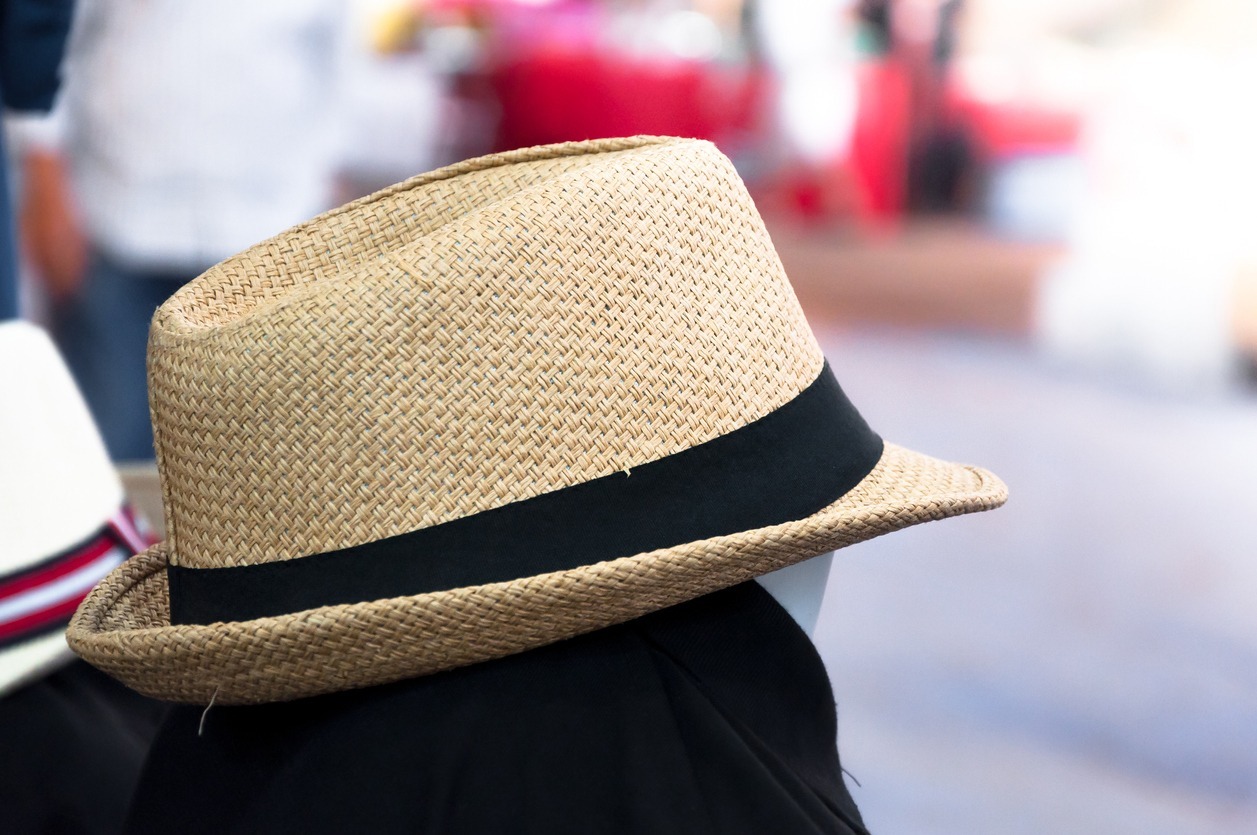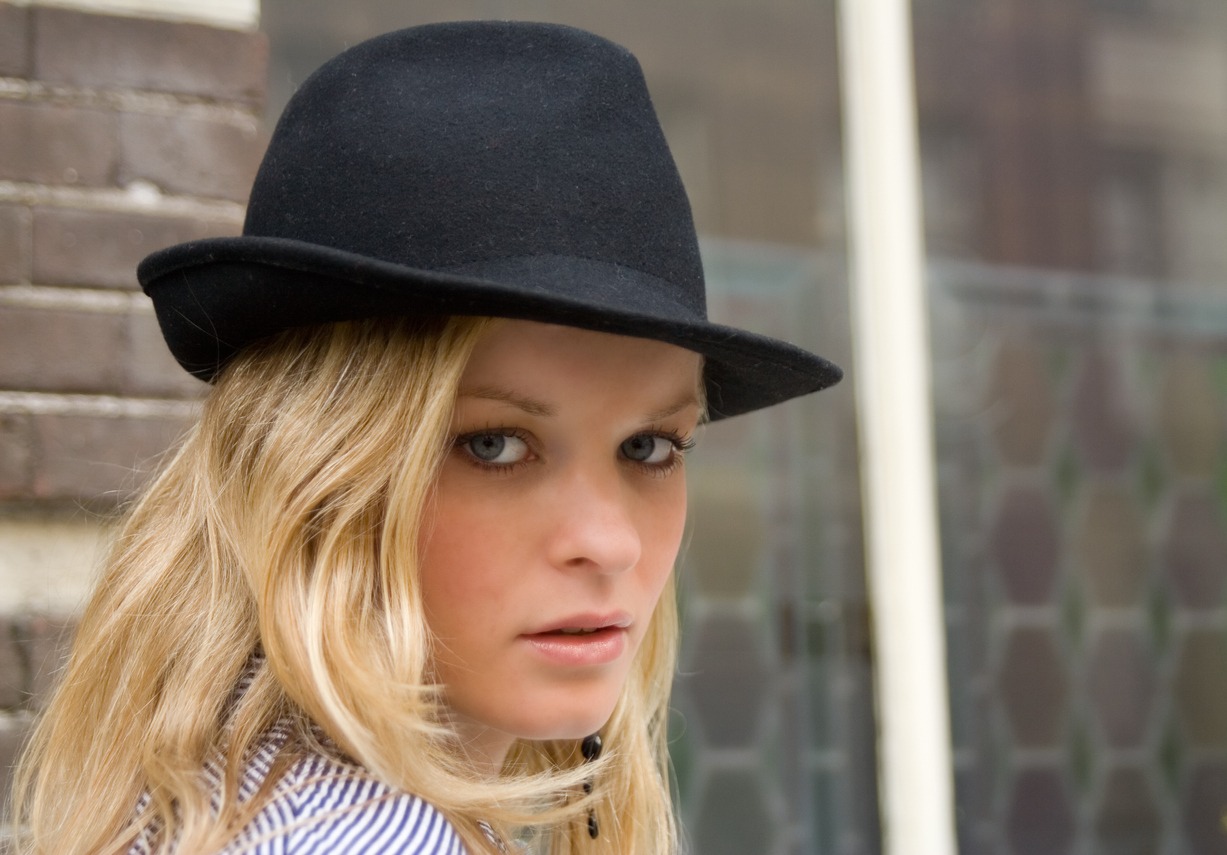Wearing a hat is a fun way to spice up your look, but as with everything else in your wardrobe, it’s important to pay attention to form, fit, and function. Given that the trilby is frequently misidentified as a fedora and derided as the epitome of hipster vanity, it’s a great idea to ensure you understand what you’re getting yourself into before purchasing this fashion accessory.
To assist you, we’ve broken down the fundamentals of a trilby hat and provided some stylish alternatives to save you from embarrassment. Once you have all the information, you can decide what route to take and be confident in your decision.
What Is a Trilby Hat?
Trilby hats were named after the 1894 popular novel “Trilby” by French-British writer George du Maurier, about a group of fictional artists residing in Paris. When it was staged as a London play, the lead actress playing trilby wore a sharp-reared, short-brimmed hat. Since then, the “trilby hat” has become a popular hat style in the United Kingdom and elsewhere.
Brim
The trilby’s short brim is the most distinguishing feature. A short-brim hat has one inch and a half or less of the brim, which is why it is called a “stingy brim” hat. A trilby brings almost no sun protection since the brim doesn’t cover the eyes.
Furthermore, trilbies are usually worn halo-style at the back of your head, indicating that they are more of a head accessory than a truly functional fashion piece.
Material
This tiny-brimmed headwear comes in various materials, including wool trilby, straw trilby, and other felt trilby. Heavier fabrics, such as wool blends, are best for cold weather, whereas cotton, straw, or canvas are better for spring and summer.
Crown
Trilby crowns are usually short; don’t expect a tall crown like the ones found on a western or top hat. Trilby hats, like safari or fedora hats, have a center indentation with pinches on either side.
The Trilby Hat’s History
View this post on Instagram
A theatre adaptation of the 1894 George du Maurier novel inspired the term trilby. At the first London production, a hat known as the “Trilby hat” was worn. It has a narrower brim than a fedora, measuring about four cm, and is frequently made with a teardrop or pinched crown.
The brim is usually snapped down at the front and upturned at the back. The trilby is customarily made of rabbit hair felt, but it is now occasionally made of other materials such as straw, tweed, and wool.
The hat reached its pinnacle of popularity in the 1960s when the lowering of the roofs of US cars made wearing a hat with a tall crown and larger brim impractical while driving. It was disfavored during the 70s when many men’s hats became obsolete, and men’s fashion began to focus on well-maintained hairstyles.
Who Does the Trilby Hat Suit?
A trilby will be ideal if you have an oval or short face. The medium brim would balance out a short face; any hat style will look great if you have an oval face.
Babies
Trilbies are only cute on babies, which doesn’t have anything to do with the trilby and everything to do with the baby because babies are adorable in everything.
A Costumed Individual
When it comes to Halloween steampunk sci-fi costumes or nailing that vaudevillian look for your coming-up theatrical DJ set, a stingy-brim trilby may be the only thing that makes any sense in these fantastically ludicrous scenarios.
A Tween
Pre-teens obsessed with boy bands can get away with silly fads, such as glittery unicorn nail polish, furry rainbow socks, and cheap trilbies. A small-brimmed trilby is a way to go if you want to blend in at the next BTS concert.
Differences Between Trilby and a Fedora
Trilby and fedora hats have been known to confuse many people due to their similarity. However, there are differences between these two styles. Fedoras and trilbies, in particular, have distinctive brims.
Trilbies have short edges slightly turned upwards at the back, whereas fedoras have relatively flat wide brims. Another significant distinction between the two is how they are worn. A trilby is usually worn higher on the head, whereas a fedora is worn lower on the head to help shade the eyes.
The trilby became popular again in the very early twenty-first century, and it was from this use that the confusion between the men’s trilby and fedora began. What most distinguishes the two hats is how they are worn, and the confusion over this has given them a bad reputation. The graceful men’s fedora and the snazzy trilby are fantastic looks, but each is in its class.
How to Put on a Trilby
To wear a trilby, embrace its youthful vibe by styling it with modern styles and designs. Pair the hat with a fitted shirt, slim trousers, loafers (check out this comprehensive guide to loafers!), and unique accessories for a semi-formal or smart casual look.
Choose one-of-a-kind accessories to finish the look. If you’re wearing your trilby in the summer, go for a straw style in a white, light cream, or beige color. If you plan on wearing a trilby in the winter, choose a felt design instead.
When Should You Wear a Trilby?
View this post on Instagram
You can wear the timeless elegant trilby on a walk, at work, during a picnic, or at a party. We recommend wearing it straight or pinched for an arty or dandy look. Be self-assured and adapt it to your rebellious or conventional personality!
As previously stated, the trilby model is a timeless and fashionable hat. It’s a versatile, elegant, and understated choice that goes with everything. And whatever the weather!
It adapts to your mood based on the season thanks to its various materials (straw, linen, felt) and designs. In the summer, in the sun, with UV protection. And in the winter, with waterproof models, in the cold and rain.
The trilby hat is among the most “adaptable” hats for outings and activities of all kinds. The trilby model, a trendy accessory with a wide range of materials, never fails, whether in winter or summer.
Trilby hats are imbued with both vintage and modern notes. The trilby has seduced all hat-wearing heads, having been widely democratized among men and women. It is appropriate for both young and older people!


